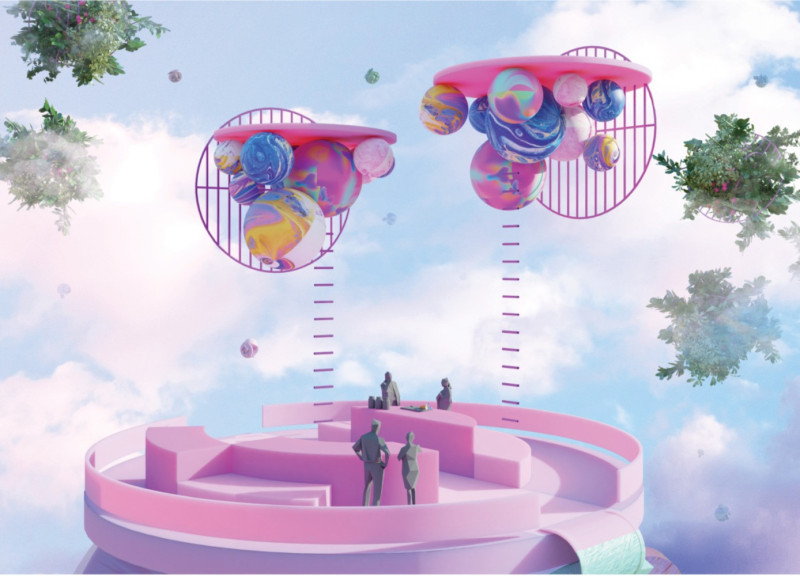5 key facts about this project
Together-Home combines the concepts of virtual reality and architectural design to enhance family connections in a digital environment. It creates a setting where families can interact while physically apart. The design divides the space into three main areas: a lounge area, a garden, and a work space. Each section is tailored to serve specific purposes, promoting engagement and collaboration among users.
Lounge Area
The lounge area is designed as a social space for family gatherings. Its amphitheatrical layout allows users to view avatars of others, fostering a sense of presence and interaction. Customized seating options, like sitting pillows, provide comfort and personalization within the virtual setting. This design creates a friendly atmosphere, encouraging group activities and socializing among family members.
Work Space
The work space supports various collaborative activities, ranging from educational tasks to creative projects. This area includes adaptable workstations that can be adjusted to meet the diverse needs of users. The layout uses features such as activity bubbles that indicate ongoing projects, making task management easier. This design allows different family members, like grandparents and grandchildren, to work together effectively, whether for homework or artistic endeavors.
Garden Area
The garden area serves a dual purpose as both a growing space and a place for transit. It creates a virtual ecosystem that actively engages users. Families can participate in nurturing their environment, such as feeding ducks in a pond, which not only entertains but also teaches responsibility. These activities encourage cooperation and enhance the experience of being together, even when physically apart.
Spatial Organization
Together-Home employs circular platforms that change traditional architectural layouts. Instead of straight lines, this design promotes smooth movement between areas. Edge bridges connect the different sections, emphasizing unity and interaction. The "planet-like neighborhood" concept adds depth to the virtual experience, allowing other homes to appear and fostering a sense of community.
The design thoughtfully addresses modern challenges of isolation, providing a platform for meaningful interactions. Customizable elements enrich the user experience while promoting connections among family members. This approach reflects the evolving nature of how people engage in digital spaces, allowing for deeper relationships despite physical distances.





















































